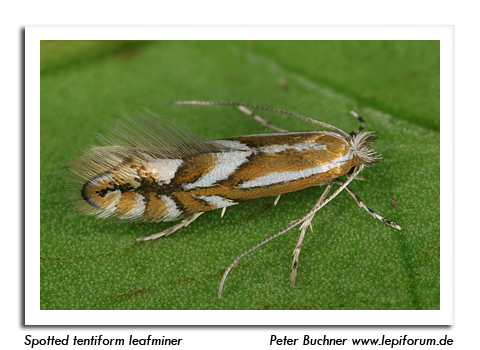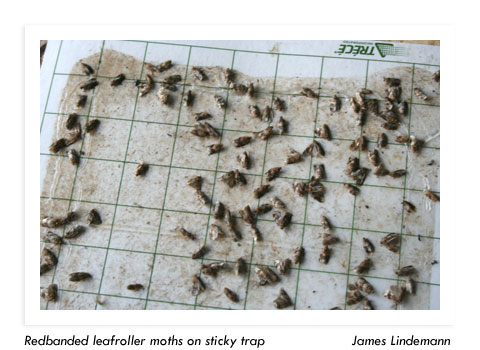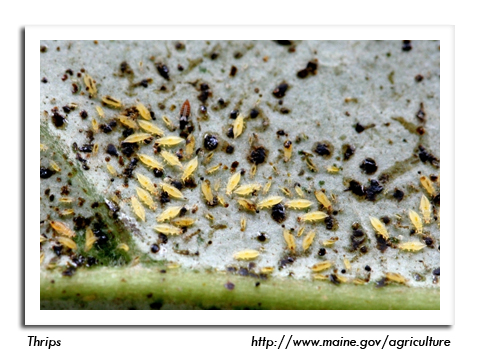
 |
|
|
Fruits
Volume 60 Number 2 Date 04/30/2015 SPOTTED TENTIFORM LEAFMINER - Peak emergence of spring moths is approaching across much of the state. The apple orchards near Hill Point in Richland County and Edgar in Marathon County reported high counts of 500-897 moths per trap from April 23-29. Elsewhere counts were much lower and ranged from 1-208 per trap. The number of moths captured during the event defined as a "peak flight" varies by orchard but is generally in the range of 800-1,200 per trap per week. REDBANDED LEAFROLLER - The spring flight has accelerated at most trap sites and egg deposition is well under way. Small larvae should begin emerging next week. A recommended sampling method for this insect is to start monitoring for early-instar larvae on foliage and watersprouts 10-12 days after the first moth is registered. Late-instar larvae and pupae can be found by searching for folded leaves. An important distinguishing feature of the RBLR larva is its uniform coloration (both the body and head are yellowish-green). Other leafrollers have black or dark heads. THRIPS - A Fond du Lac County apple grower reports that thrips are reappearing in many of the same orchard blocks that were infested in previous years. As has been the case in the past, the heaviest populations (1-8 per cluster) are concentrated in perimeter trees adjacent to wooded areas. Apple growers are advised to check buds on several different varieties in multiple locations, including the orchard perimeter, for thrips activity. An economic count of three or more thrips per fruit bud can cause abnormal leaf formation, leaf tatter, flower injury and reduced fruit set. Materials available for thrips control are spinosad (Entrust) for organic orchards and spinetoram for conventional orchards (Delegate for apples or Radiant for strawberries). OBLIQUEBANDED LEAFROLLER - Larvae are resuming activity after overwintering under the bark of scaffold limbs and twigs. The ¼-inch, yellowish-green caterpillars with black head capsules are expected to feed for 2-3 weeks before pupating within leaf tubes. Scouting is recommended in the week ahead. ORIENTAL FRUIT MOTH - The first of three moth flights that occur annually in Wisconsin could begin soon across southern Wisconsin. Apple growers concerned about this insect should place pheromone traps over the weekend of May 2-3. BACILLUS THURINGIENSIS - Apple growers who intend to apply Bt before or during bloom for control of leaf-feeding caterpillars are reminded that most formulations persist on foliage less than a week following application. Because Bt must be ingested by larvae to be lethal, it is imperative to confirm the presence of caterpillar pests and treat only if temperatures are warm enough for their activity. -- Krista Hamilton, DATCP Entomologist 




|
|
|